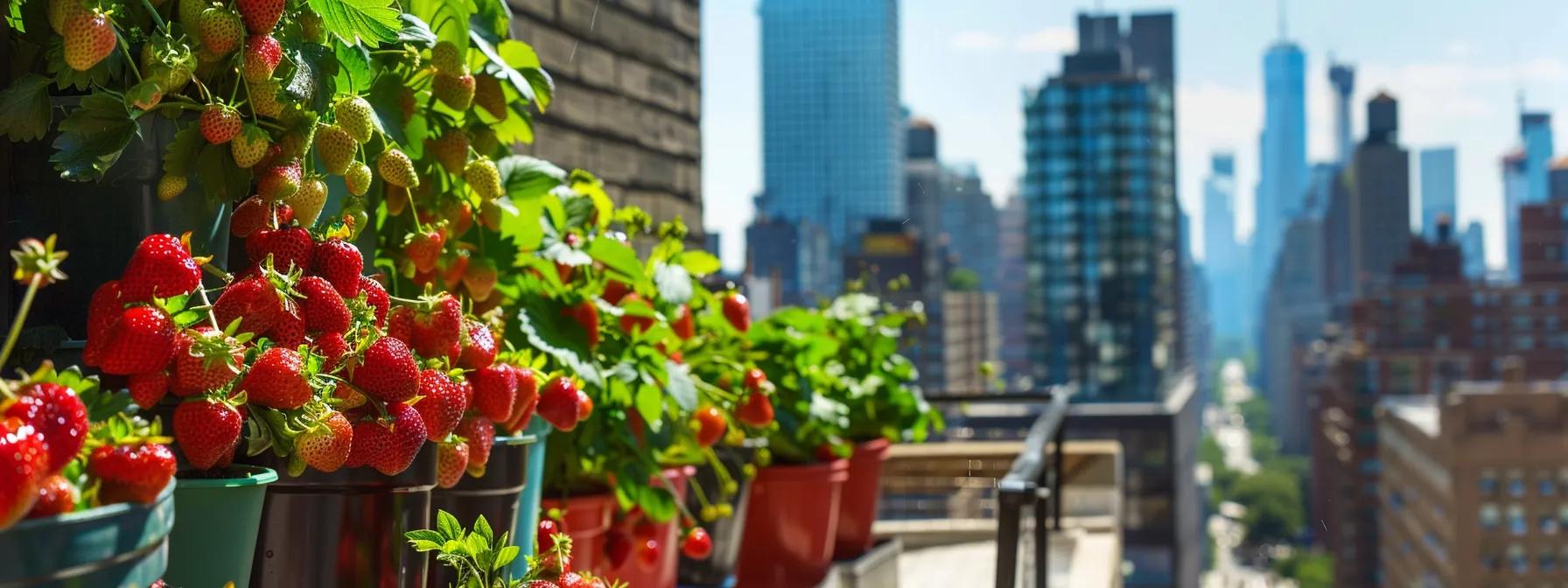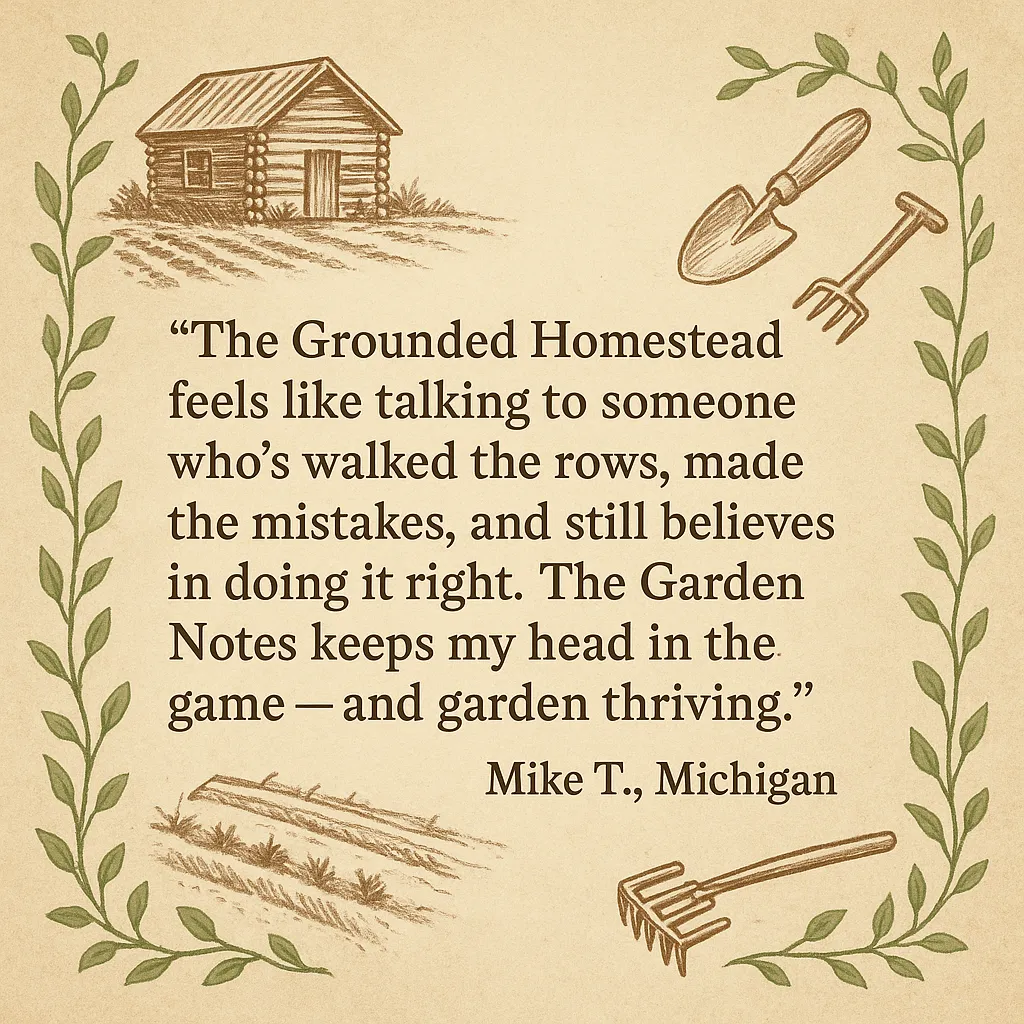
Strawberries in Small Spaces: Balcony, Border, and Vertical Growing Techniques
Strawberries in Small Spaces: Balcony, Border, and Vertical Growing Techniques
INTRO: Berries on the Balcony
The first time I grew strawberries, I didn’t have land. Not really. Just a fourth-floor walk-up with a sun-soaked railing and a plastic box wedged between two patio chairs. That summer, I picked my first berry in a pair of work boots standing on concrete.
I still remember the flavor. It was warm from the sun, smaller than store-bought, but sweeter by a mile. And that was all I needed to know: yes, you can grow real food in small spaces. One container, one strawberry, one start.
This guide is for anyone growing without a backyard—balcony growers, porch planters, or anyone trying to make the most of a side yard, fire escape, or sunny window. You don’t need land. You need a plan.
1. Getting Real About Small-Space Growing
Let’s be honest. You’re not going to feed a family of five off a single planter. But can you grow enough to pick a bowl of berries a week? Yes. Can you teach your kids where food comes from? Absolutely. Can you take back a piece of the food system, even in the middle of the city? You bet.
Pros of container strawberry growing:
Easier pest control
Better drainage
Sun-chasing flexibility
Faster soil warming in spring
Challenges to plan for:
Faster drying (daily watering in heat)
Root crowding if containers are too shallow
Wind exposure or heat buildup on hardscapes
👉 Say the quiet part: Some folks wonder if it’s worth it. Here’s the truth—every berry grown at home is a step toward independence. You’re building skill, confidence, and joy. That’s worth a container.
2. Layouts That Work in Tiny Spaces
Vertical Towers
Vertical planters save ground space and maximize sun exposure. You can build your own out of stacked buckets or buy a rotating tower online.
What matters:
Drainage: Make sure excess water can exit without pooling.
Sunlight: Full sun is best—6+ hours. Rotate if needed.
Weight: If placing on a deck or railing, know your limits. Wet soil is heavier than it looks.
Gutter Gardens & Wall-Mounts
Old rain gutters make great strawberry planters when mounted securely. They’re shallow, so use smaller, day-neutral varieties and don’t overplant.
Tips:
Line the gutter with landscape fabric before adding soil.
Tilt slightly for drainage and water flow.
Mount south-facing for best light (northern hemisphere).
Rail Planters & Border Boxes
These clamp-on or hanging boxes are perfect for balconies. Just be sure to buffer them from strong wind and midday heat.
Tips for success:
Use containers at least 8" deep
Mix with trailing herbs like thyme or nasturtiums
Water often—railings heat up quickly
➡️ Want help picking the right setup? Download the Small-Space Strawberry Starter Guide (PDF) — includes layout diagrams and a planting checklist.
3. Soil & Water: Your Two Biggest Keys
You can’t cut corners here. Container plants depend entirely on the soil and water you provide.
Jeff’s Go-To Soil Mix:
40% coconut coir or peat
30% compost (finished, screened)
20% vermiculite or perlite
10% worm castings or aged manure
Lightweight, moisture-retentive, and nutritious. Refresh yearly.
Watering Strategy:
Water deeply in the morning, every 1–2 days in hot weather
Use self-watering planters, drip lines, or saucers to slow evaporation
Watch for yellowing leaves (too wet) or crispy edges (too dry)
💡 Bonus: Compost Tea Recipe
5 gal water + 2 cups compost + 1 tbsp molasses
Brew 24 hrs, stir occasionally
Use as a foliar spray or root soak every 2 weeks
4. What to Plant, and When
Top Varieties for Containers:
‘Albion’ – large, sweet, and hardy
‘Evie 2’ – compact and productive
‘Seascape’ – adaptable, with a long fruiting window
These are all day-neutral or everbearing types—meaning they fruit steadily through the season instead of one big burst.
Timeline by Zone:
Zones 3–5: Start indoors or buy plugs, transplant after frost. Use black pots and mulch for warmth.
Zones 6–8: Plant in early spring, prune runners mid-season.
Zones 9+: Shade containers in high heat. Grow in cooler months or use part-shade locations.
Plan for 8–10 weeks to first fruit after transplanting.
5. Pollination in Low-Bee Zones
One downside of balcony or indoor setups: bees don’t always visit.
Solutions:
Hand-pollinate: Use a paintbrush or soft toothbrush in the morning. Gently swirl from flower to flower.
Add flowers nearby: Calendula, alyssum, or lavender attract pollinators.
Open windows or move pots outside during flowering if starting indoors.
6. Pest Control Without a Garden Ecosystem
You don’t get birds, frogs, or ground beetles up on the fourth floor—so you’ve got to outsmart pests yourself.
Common issues:
Spider mites: fine webbing, speckled leaves
Aphids: clustered on stems or undersides
Slugs: especially in damp pots or rail boxes
Organic Solutions:
Neem or castile soap spray (1 tsp per 1 qt water, add drop of oil)
Copper tape around pots for slug control
Crushed eggshells (Grandma’s trick—simple and effective)
Check plants daily, especially after rain
7. Harvest & Long-Term Container Care
Pick berries when fully red—all the way to the tip. Morning is best.
Remove runners unless you’re propagating new plants
After season ends:
Zone 7+: mulch and leave outdoors
Zone 6 or colder: move to unheated garage or insulated area
Replace soil each spring or refresh with compost + castings
8. “But What If I…” (Reader Doubts Addressed)
“What if I forget to water?”
→ Add a self-watering insert or set a daily phone alarm.
“Is one box really worth it?”
→ Yes. You’ll learn, you’ll grow, and you’ll get real food.
“I don’t have a green thumb.”
→ Good news: strawberries don’t need one. They’re hardy, forgiving, and generous.
FINAL THOUGHTS: A Garden Doesn’t Need Ground
This isn’t just about berries. It’s about reclaiming something. Growing strawberries in a small space teaches you observation, patience, and connection. It gives you food you can trust.
You don’t need acreage to live a grounded life. You just need a spot of sun, a little water, and the decision to start.
“Build houses and settle in them; plant gardens and eat what they produce.” – Jeremiah 29:5
Looking for more professional guidance & homesteading resources?
Explore our trusted guides to learn more about growing healthy food, managing your land, and building lasting systems for your homestead. Whether you're looking for planting tips, seasonal checklists, or natural solutions that actually work—we’ve got you covered.
Start with these helpful reads:
Everything to know about Strawberries:
Start with Strawberries: Ground Your Garden with Fruit that Grows Back
6 Common Strawberry Plant Diseases and How to Treat Them Naturally
The 6 Pests That Wreck Strawberry Crops—and How to Beat Them Naturally
Beyond Straw: Choosing the Right Mulch for Every Strawberry Bed
Runner Management 101: Multiply Your Strawberry Patch with Purpose
Frost, Flood, and Fungus: Protecting Strawberries in Extreme Weather
The Best Strawberry Varieties for Continuous Summer Harvests
Top 14 Practical Uses for Fresh Strawberries (Beyond Jam)
Start a U-Pick Strawberry Business (Even on 1 Acre)
How to Fertilize Strawberries for Yield, Flavor, and Runner Control
Wild Strawberries vs. Cultivated: Should You Grow Fragaria vesca?
The Complete Guide to Propagating Strawberries: Growing Strawberries from Seed


Facebook
Instagram
X
Youtube